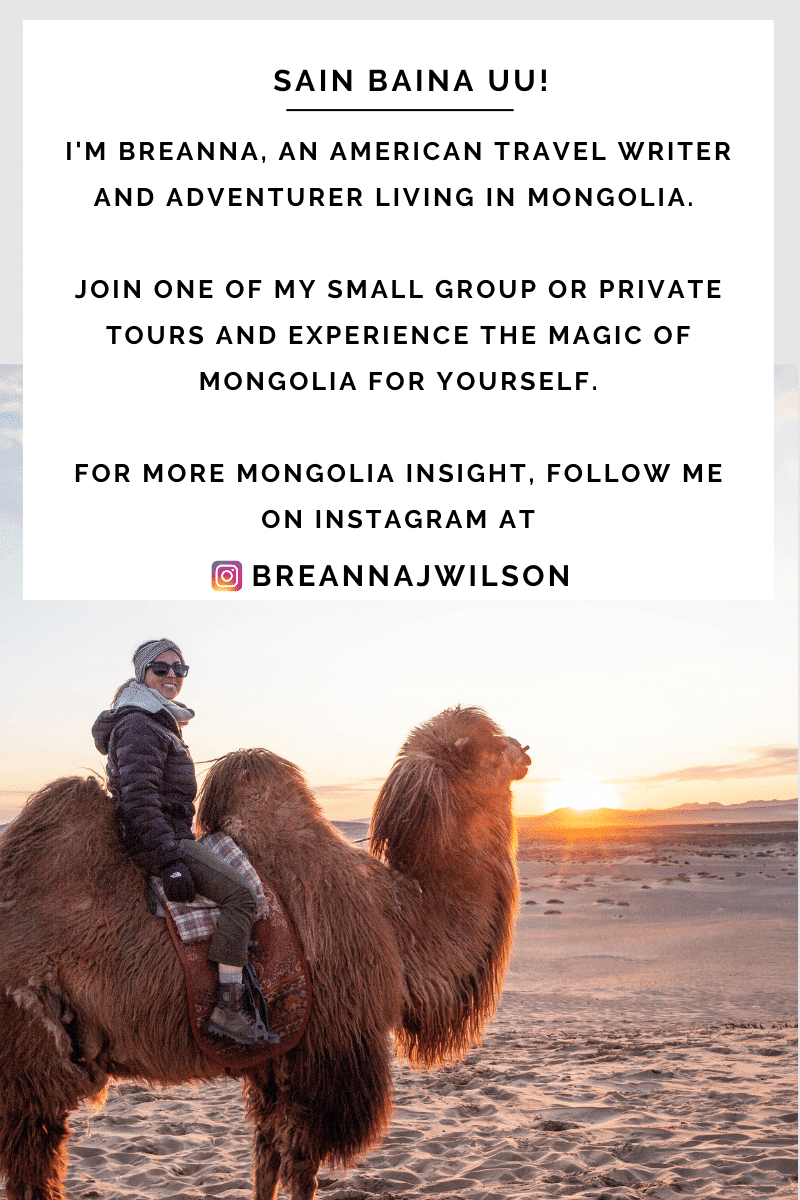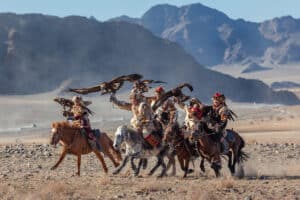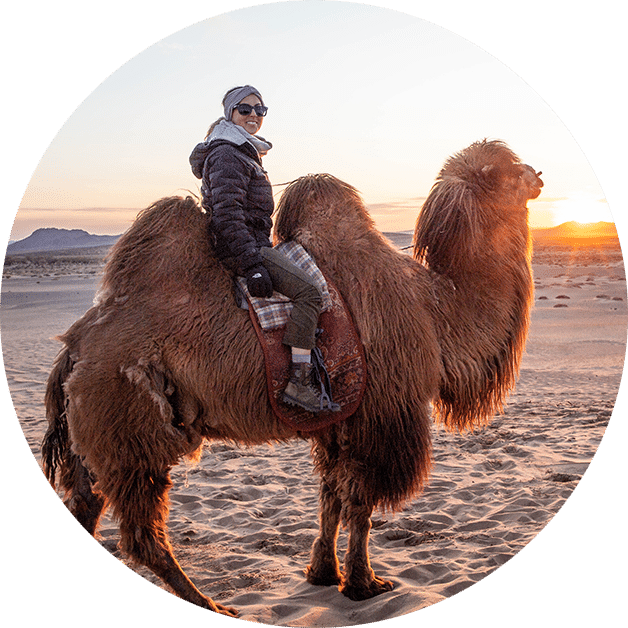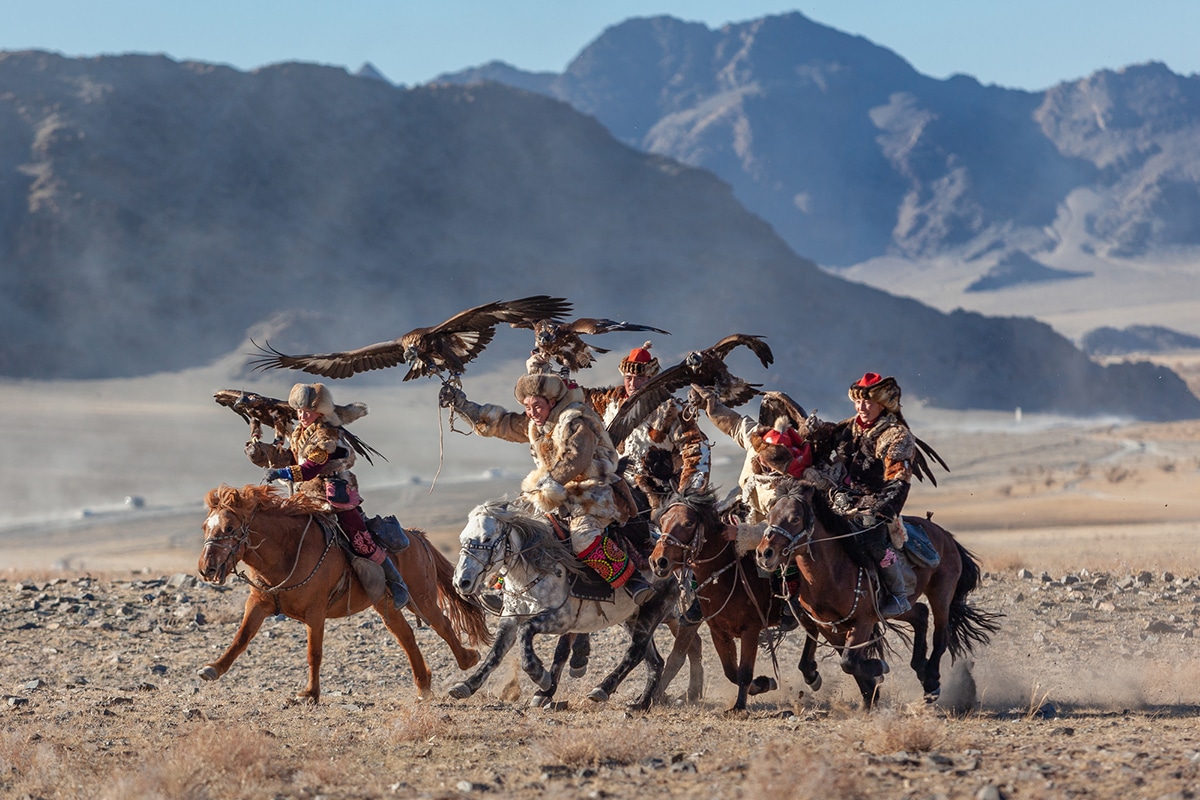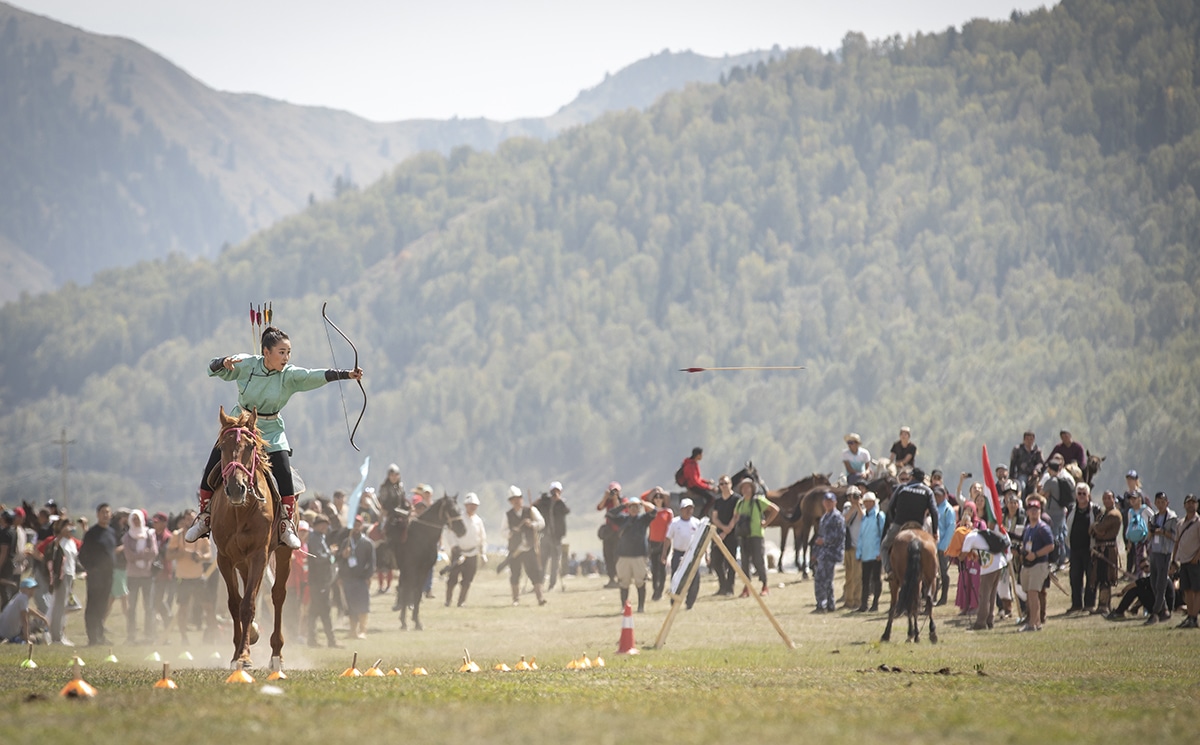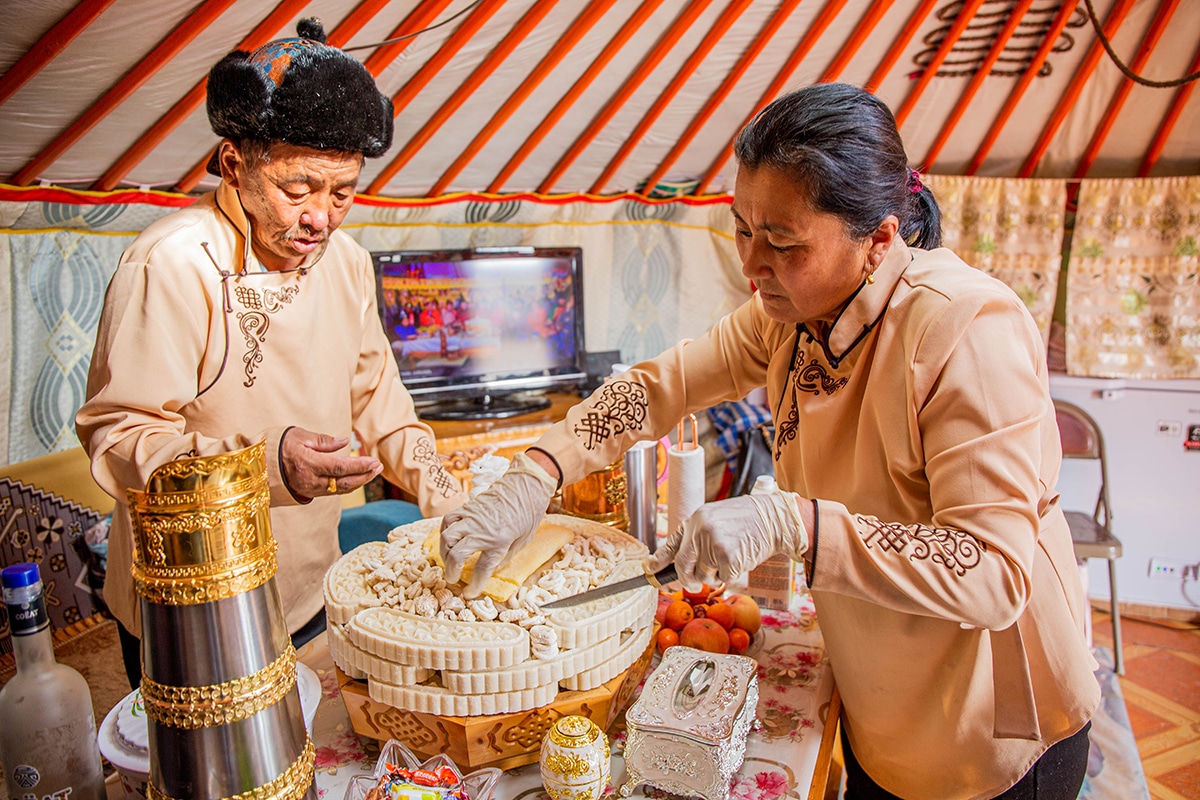Is Mongolia Safe?
Tips for traveling safe solo or in a group, common scams, and what to know in case of an emergency.
- May 12, 2020
Table of Contents
For the most part, Mongolia is extremely safe. Locals are incredibly hospitable and welcoming. Foreigners and unacquainted neighbors can show up at a ger’s doorstep, be invited in for a meal, and given a place to sleep – no questions asked, no money exchanged. Everyone helping everyone is just part of the nomadic culture. It’s how this nomadic way of living has been able to survive for so long.
The question of safety though, as it always is, is more complex.
Pre-COVID-19, Mongolia received around 500,000 visitors annually. When compared to Italy, which receives 63 million visitors a year, the numbers are small. Still, as with any city and crowded place, petty theft and burglary happens. The same with pickpockets, especially in places that are known to attract tourists (like the Black Market or Sukhbaatar Square). Basically, don’t leave your valuables unattended, ladies keep your purses zipped, and gentlemen keep your wallets and mobile phones in your front pockets.
And, of course, extra caution should always be taken with regards to any expensive belongings you might be traveling with. Always use the safe in your hotel room and lock your bags or make use of whatever lockers and storage rooms are available in a shared hostel (which are generally very clean and safe places to stay, by the way).
An extra level of precaution should be taken in the evenings, especially whenever alcohol may be involved. Areas where nightlife is concentrated, such as Seoul Street, have a higher concentration of physical assault. This security message from the U.S. Embassy in Mongolia is insightful.
Military and Political Conflicts
Mongolia is not at war, nor does it have any major political conflicts. So, is Mongolia safe when it comes to military and political conflicts in this part of the world? You bet it is.
The Mongolian Armed Forces is mainly comprised of two divisions, a ground division and an air division. There is a one-ship navy on Lake Khovsgol, but as one of the largest landlocked countries in the world, the need for a navy is unwarranted.
Today, service in the military is mandatory for males, all of whom serve for one year before the age of 25, unless they attend college or are excused due to health reasons.
The roots of the military go back to the days of Genghis Khan, the Mongol emperor who created the first military system in the world, which united the tribes across the steppe in a way that no one could have ever imagined. The history of Genghis Khan’s successes and conquers shaped history forever.
The military force is important given the country’s position between two major world powers – Russia and China. Borders are open with both of these countries, where imports and exports are exchanged, and cross-border traffic is in a constant flow. Relations between these bordering countries are in good standing, but Mongolia still depends on a third neighbor policy where they focus on strong relationships with countries other than their two neighbors.
Is Ulaanbaatar Safe?
While the matter of safety will be different for every person and every situation, Ulaanbaatar is a safe city. Mongolians are generally very prideful people and neither burglary nor theft are common. Ulaanbaatar isn’t a place that tourists frequent often, or for a great deal of time, so they aren’t particularly targeted.
That being said, mobile phones, laptops, and expensive camera equipment should never be left unattended. Items that can easily be resold for value make for an easy target. Be cautious when carrying a camera strapped around your body, especially if a lens can quickly be detached. A “grab-and-go” is not out of the question, especially with detachable camera equipment.
Be aware of your surroundings at night, especially if you’re walking alone; we recommend taking out your headphones. Make sure your bag is zipped and held close to your body. Place keys between your fingers, if you’re feeling especially uncomfortable.
Foreign men (especially of Caucasian, African, or Chinese nationality and decent) should be cautious when approaching and advancing Mongolian women in co-ed groups, and of public displays of affection in inter-racial relationships.
Foreigners should always try to respect Mongolian traditions so as to not disrespect a local. Never point or swear at someone; pointing is considered as an extremely rude gesture in Mongolia and swearing at someone never helps a situation. Even though they might not speak English, they know the words you’re using.
The most dangerous, and sometimes racially motivated, situations tend to arise when alcohol is present. Verbal slurs or physical violence may occur in this environment, particularly toward non-Caucasians or anyone with a local female. Be prepared for some minor discrimination, be cautious, and always be aware of your surroundings.
Police in Mongolia
Police officers are few and far between in the city and chances are they won’t speak English.
For non-medical emergencies, dial 102 plus the country code +976 if you’re dialing from an international number.
There is a local police station on Sambuu Street next to Liberty Square, two blocks east of the Holiday Inn. You’ll need a translator. While hotel managers and hostel owners can help in a pinch, remember that’s not their official job and you may need to hire a translator or tour guide to help with issues that are more time consuming and detailed. If the issue is quite serious, we recommend hiring a translator for the day. (If you’re traveling as part of a tour group, your tour guide and tour company will be able to help in this instance.)
For additional assistance, such as obtaining a list of English-speaking attorneys or help repatriating back to your home country, contact your embassy. A full list of embassies in Ulaanbaatar, along with their phone numbers and addresses, can be found on our Embassy page.
Guns
Guns are extremely rare in Mongolia. Chances are you won’t see a single one your entire trip.
Nomadic herders own the occasional gun, but more likely it’s an antique and used only to protect their herds against wolves. In most instances, nomads simply use red lights or something that imitates the sound of a gun to serve the same purpose.
A local or police officer within the city carrying a gun is extremely unlikely.
Drugs
Drugs in Mongolia are rare. To outsiders, it may feel like they don’t exist. While you can buy weed, be warned: this is some low-quality stuff, and certainly nothing worth the risk. If you’re caught with weed, or other drugs, the punishment is severe (expect a “no tolerance” policy that will have you reported to your embassy and almost immediately deported).
Alcohol Abuse in Mongolia
On the first day of every month, from midnight to midnight, sales on alcohol are banned. It’s the country’s “dry” day. You can’t buy alcohol in the grocery store or at the local bodega; you can’t sip on a cocktail or a glass of wine at a restaurant. No exceptions. No getting around it. Accept it and learn to respect it.
Part of the reason for the monthly dry day is the country’s growing dependence on alcohol. A 2004 report for the UNDP indicated that 72% of serious crime (murder, violent robbery, and attacks) were alcohol-related.
If you plan to drive while visiting, keep in mind that the national maximum legal blood alcohol concentration (BAC) when driving is 0.05%.
Taking Public Transportation and Taxis
Hailing a taxi in Mongolia means putting out your arm and waiting for a local to pull over. Usually this surprises and scares foreigners, but rest assured it’s totally safe. In fact, this is how most locals get around.
Official taxis that you call through an app like UB Cab are also very safe. There’s no Uber, Lyft, or Yandex in Ulaanbaatar, so this is the only option you have if you want to use an official taxi service in the capital.
While you’ll certainly receive a look or two as a foreigner onboard public transportation, taking the bus is also safe. Again, general caution should be practiced, like not falling asleep with a wad of Mongolian tugriks hanging out of your pocket. Besides that, you can expect a totally uneventful ride.
I go into better detail about how to take public transportation and taxis in my Ulaanbaatar Travel Guide →
Embassies in Ulaanbaatar
Ulaanbaatar is home to embassies for the United States, United Kingdom, Turkey, Russia, South Korea and more. They are easy to access from the city center. A full list of embassies and their addresses, phone numbers, and websites can be found on our Embassy List page.
Walking the Ger District
Unless you have a particular reason to head to one of Ulaanbaatar’s ger districts, we would recommend avoiding. While it’s neither dangerous nor hiding some locals-only hangout, it’s about respect. How would you like it if foreigners came to your home city but only visited the most impoverished part?
Ulaanbaatar is an incredibly diverse and rapidly developing city. Help it build a name for itself.
If you absolutely must head out there, don’t be surprised when you attract attention. Ger district residents will be more curious than anything else, as not many visitors make their way out here. Exercise caution and respect at all times.
Photographing Locals in Mongolia
Photographing locals anywhere in the world is always a delicate situation. That is particularly true here. While most locals don’t want to be photographed by strangers, understandably, they’re usually happy to smile for you if you ask nicely (“zurag avch bolokh uu?”).
When you consider that photographs taken in these situations are used to misrepresent Mongolia and make the country look in dire need of aid and assistance, it’s easy to understand why locals may be hesitant to put themselves out there. No one wants to be the poster child for poverty.
The same goes with photographing children. While Mongolian children are some of the happiest, most adorable children in the world, please use your best judgement when taking photos of local youth. Use your best judgement when sharing your photos and your experience.

Prepare for your Trip:
Are there Tourist Scams in Mongolia?
The biggest “tourist scam” you might run into as a foreigner is inflation, which usually only results in an extra thousand tugriks or two ($0.35 – 0.75 USD).
Another might occur at a border. Some border guards have been known to bribe or sell fake Mongolia car and traveler’s insurance to foreigners. Be respectful, cautious, and approach every new situation with extreme sensitivity in these circumstances.
Bribery in Mongolia
Bribery is common in Mongolia. We’d never condone this, as it supports the belief that it’s something locals can get away with, but if the situation seems like it could escalate, use your best judgement.
There are also certain times during tourist season (June through September) when travelers should be aware that bribery is more common. Around the Naadam Festival in July – getting tickets for the opening ceremony can come at a much inflated price, for example.
Will you be more safe from bribery in Mongolia by not carrying a large sum of cash? Maybe. Don’t wave around a fistful of MNT and you’ll avoid a lot of problems – a good, general rule to follow anywhere in the world.
Travel Insurance
Like anywhere in the world, expensive computer and camera equipment will always draw attention. Whether you mean to or not, it will make you a target. This sort of equipment can be sold quickly and easily for cash, with little chance of the sale being traced back to the criminal.
Never leave your valuables unattended (not even to use the restroom in a coffee shop) and use caution when wearing expensive jewelry or carrying large amounts of cash.
I can’t stress this enough: plan ahead and get travel insurance before your trip, even if you don’t plan to bring expensive equipment.
Is driving into the Mongolian steppe safe?
Outside the city, the most dangerous situations happen when driving at night. The terrible road conditions mean reduced visibility, drunk drivers (on roads within nearby towns), and drastic weather changes, along with limited emergency response services.
If your car does break down, or you find yourself in a medical emergency, help will not be close. There are no helicopter rescue services, cell phone service tends to be nonexistent in these remote areas and getting to the nearest soum (small town) by foot may be impossible. Plan for the worst-case scenario when traveling through the countryside.
Satellite phones and systems like Garmin’s inReach Mini are reliable and should always be brought as a backup in case of emergency, especially if you’re planning a particularly remote (or dangerous) trip in Mongolia. Staying safe should always be a priority here.
Driving in Mongolia
Mongolians drive on the right side of the road and cars can either be right-hand or left-hand drive, though right-hand is the most common.
Within the city limits, there are license plate restrictions that ban the movement of cars with specific plate numbers on designated days, due to traffic that has overtaken the city in recent years. If you’re not comfortable driving in heavy traffic, or with right-side drive, please plan accordingly.
Is it safe to cross the borders into Mongolia in my own vehicle?
If you’re entering the country with your own vehicle, via a border crossings in Russia or China, you’ll be asked to show the Certificate of Entitlement, the vehicle owner’s passport or notarized proof of entrustment (if the vehicle is not in the passport holder’s name), CPD carnet (if available), as well as the name, address, and contact detail of the individual or company responsible for organizing your Mongolia travel plans.
Once the border patrol checks and verifies this information, you’ll be issued an Endorsement Sheet for temporary admission verified with an official customs control seal. You’ll need to keep this sheet on you at all times, and you’ll need to provide it when you leave the country. You’ll also need to show this form in case of accident or emergency.
Car Camping and Road Tripping in Mongolia
The beauty about taking off by car across Mongolia is that you can pretty much go anywhere and set up camp anywhere you want. Most land is public, and most nomads are welcoming – it’s pretty clear where you are welcome and where you are not.
Be aware of Mongolian dogs at gers out in the middle of the steppe, as they are there to protect the nomad’s herds (though they usually have a larger bark than bite). Take note: if you see a herder dog with a red felt collar, that means the dog is not friendly.
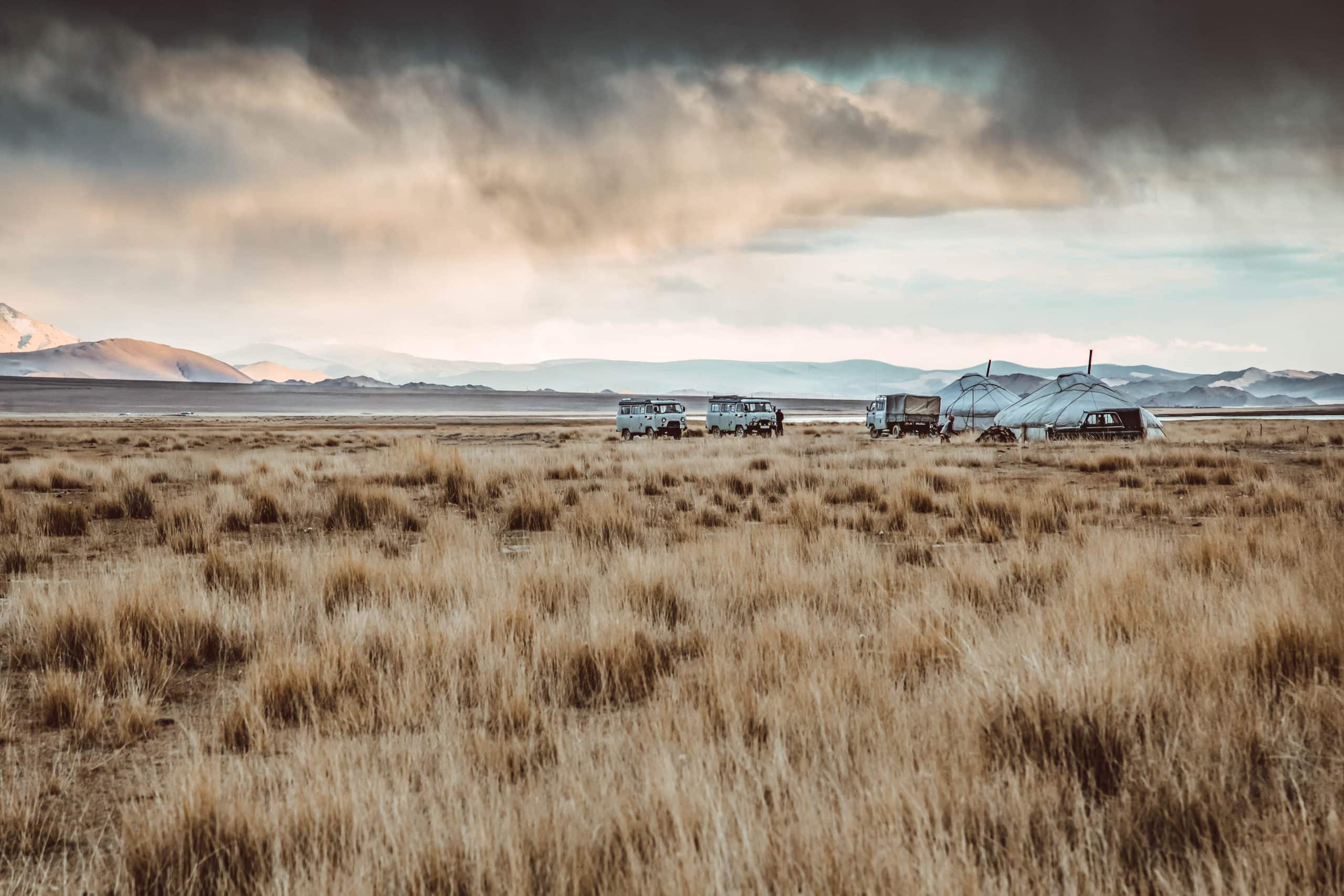
Is Mongolia safe for families?
Yes! Absolutely. Mongolia is an incredible place for families to experience something truly unique and bond over experiences that they wouldn’t find anywhere else in the world.
Helpful Tips for Families Planning a Trip to Mongolia
While Mongolia is a welcoming place, we wouldn’t recommend traveling with very young children or elder relatives who have trouble moving around freely on their own. Mongolia can be a difficult and quite uncomfortable place to travel through and there are lots of hazards when it comes to life here – hot stoves inside gers, wild animals, a lack of emergency medical services and medicines, and so on.
Bring snacks. Lots of snacks. The nomadic diet of mutton and dairy can be hard to endure, even for adults. Bring simple snacks that pack and travel well and don’t require a lot to prepare – you won’t find microwaves and the stove setups are quite simple. Don’t be alarmed when you see fires being fueled by cow dung; the nomads make use of everything they can out in the countryside.
Bring extra coloring books and games to share with local nomadic families – it’s a great way for your kids to make friends and you never know what game or small token of appreciation your children might be gifted in return. (Try to avoid things like stickers and toys with small plastic pieces that will inevitably end up as liter on the steppe.)
Is Mongolia safe for solo female travelers?
While aggressive behavior toward women, especially foreign women traveling alone, is not especially common, it – like anywhere else – does happen.
Women should always be aware of their surroundings when it comes to traveling solo in Mongolia. Avoid wearing overly expensive jewelry or dressing provocatively, especially in the countryside. Mongolia isn’t a conservative country, but in sparsely populated areas, anything out of the ordinary could draw unwanted attention.
Women are advised to not walk alone through the ger or surrounding districts around the city, where they would be vulnerable and easily stand out. Stick to parts of the city that have foot traffic and take public transportation or a taxi when available, especially late at night.
While foreign travelers are mostly safe, Mongolia has one of the highest rates of domestic abuse against women in Asia, according to a 2017 study by the United Nations Population Fund (UNFPA) and the National Statistics Office (NSO). In fact, domestic violence wasn’t a crime here until 2017.
Domestic abuse is something the country tends to sweep under the rug. While Mongolian women are treated fairly equal, it’s not uncommon for a domestic dispute to turn aggressive. Life here can be hard, and stressors often run high, particularly in the countryside.
Is Mongolia a good destination for travelers with disabilities?
Not particularly. While a traveler with disabilities can absolutely make a trip here work, we have to be painfully honest and blunt – you won’t find many ramps or attempts to provide accessibility throughout the country. The government has a long way to go when it comes to these types of laws and regulations.
It’s common to find stairs at the entrances to most buildings in Ulaanbaatar and getting in and out of a UAZ Furgon becomes a daily part of life. If either of those are hard for you as a traveler, Mongolia is going to be a long, difficult journey.
Emergency Numbers and Hospital Information
For Non-Medical Emergencies
Call 102. (Add country code +976 if you’re dialing from an international number.)
Visit the local police station on Sambuu Street in Ulaanbaatar. It’s next to Liberty Square, two blocks east of the Holiday Inn.
Contact your embassy. A full list of embassies in Ulaanbaatar along with their phone numbers and addresses can be found on our Embassy page. A list of ways that your embassy can be of service can be found on that page as well.
Hotel and hostel managers, as well as tour guides, can help with simple translation asks but don’t expect the local police to speak English. Remember not to take for granted a host’s help with translation – that isn’t their job.
For Medical Emergencies
Call 103. (Add country code +976 if you’re dialing from an international number.)
Visit the emergency medical hospital located at Trauma Hospital located at Chingbayan LLC, 7th khoroo, Ulaanbaatar 16094, Mongolia.
To get to the Trauma Hospital from the city center (we’ll use the State Department Store as our starting point), head west down Peace Avenue. In about 4 kilometers you’ll come to a major 4-way intersection with a group of hospitals on your right. Turn right at this main intersection. The Trauma Hospital is behind this group of hospitals, a few more minutes up the road, past Dilav Khutagt Jamsranjav’s Street. (Type in “Hospital for Injury and Trauma” if you’re using Google Maps – this is the hospital you want.)
The hospital is towards the outskirts of the city center and could take up to 30 minutes or more to reach in heavy traffic.
Author: Breanna Wilson
Hi! Sain uu! I’m Breanna, an American travel writer and adventurer living in Ulaanbaatar, Mongolia for more than 5 years. I’ve written for and been featured in Condé Nast Traveler, CNN, Forbes, and the New York Times, among others. Read more of my Mongolia travel articles here.
Join my Private Travel Group on Facebook
Proudly Based in Ulaanbaatar, Mongolia
© 2024 Meanwhile in Mongolia

